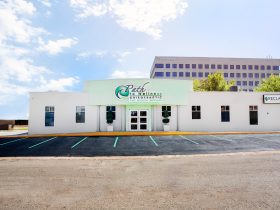Introduction
Magnesium oxide boards—commonly referred to as MgO boards—are rapidly gaining favor in the construction industry as an eco-friendly, high-performance alternative to traditional drywall and cement-bonded panels. Composed primarily of magnesium oxide (MgO), magnesium chloride (MgCl₂), and various fillers and reinforcements, these panels combine strength, fire resistance, and moisture tolerance in a lightweight package.
Key Properties and Advantages
- Fire Resistance: MgO boards exhibit non-combustible behavior and can withstand temperatures exceeding 1,000 °C without releasing toxic fumes. Their innate fireproof qualities make them ideal for use in schools, hospitals, and commercial complexes where safety is paramount.
- Moisture and Mold Resistance: Unlike gypsum-based drywall, MgO boards are highly resistant to water absorption and inhibit mold growth, making them suitable for bathrooms, kitchens, and exterior sheathing applications.
- High Strength and Durability: With excellent flexural and compressive strength, MgO boards resist impact and wear over time, reducing the need for frequent replacement or repairs.
- Environmental Sustainability: Manufactured from abundant, low-carbon raw materials and often incorporating recycled content, MgO boards boast a smaller carbon footprint compared to Portland cement or conventional gypsum panels.
- Acoustic and Thermal Performance: Their dense, fibrous structure provides good sound insulation and contributes to the thermal inertia of building envelopes, helping stabilize indoor temperatures and improve energy efficiency.
Common Applications
- Interior Wall and Ceiling Linings
- Replacing gypsum board in residential and commercial interiors
- Creating fire-rated partitions in multi-unit dwellings
- Exterior Sheathing and Cladding Backing
- Underlay for rain-screen façades
- Substrate for tile or stone in wet areas
- Floor Underlayment
- As a dimensionally stable, moisture-resistant base for ceramic tile or vinyl flooring
Specialty Use Cases
- Prefabricated modular construction panels
- Backing for terrazzo or polished stone installations
Installation Tips
- Cutting & Machining: Use carbide-tipped tools to score and snap panels cleanly, minimizing dust.
- Fastening: Corrosion-resistant screws or nails are recommended—avoid plain steel to prevent rust staining.
- Joint Treatment: Apply alkali-resistant fiberglass tape over board joints, then finish with a compatible MgO–based joint compound.
- Sealing & Finishing: Prime the surface before painting or applying decorative finishes to ensure proper adhesion and color consistency.
Challenges and Considerations
- Alkali Sensitivity: MgO boards can react with certain sealants or adhesives containing phosphates or sulfates. Always verify compatibility with your chosen finishing products.
- Supply & Cost: While prices are decreasing as production scales up, MgO boards may still carry a premium over basic gypsum board in some markets.
- Quality Variations: Not all MgO boards are created equal—look for manufacturers with third-party certifications for fire and structural performance.
The Future of MgO Board
As sustainability and resilience become non-negotiable criteria in modern building design, magnesium oxide boards are poised to play a leading role. Innovations in panel reinforcement, surface finishes, and integration with green-certified systems are continually expanding their versatility. Whether you’re an architect specifying materials for a new classroom wing or a homeowner updating a bathroom, MgO boards offer a compelling blend of safety, durability, and environmental responsibility.
MgO boards represent a smart investment for any project that demands fire safety, moisture resilience, and long-term performance—all while aligning with today’s green building standards. By understanding their characteristics, proper installation techniques, and potential pitfalls, builders and designers can leverage MgO technology to deliver structures that stand the test of time.













